Identifying turf disease & fungus
There are many diseases that occur in lawns. Most of the diseases are caused by various fungal strains, either on the plant itself or in the soil. Turf diseases are found in most conditions, meaning both warm and cool season grasses are susceptible. Read More
Grass diseases can be caused by environmental conditions or factors, such as:
- cold and extended wet periods
- warm and humid conditions
- drought and stress
- high soluble salts and poor nutrition
- soil compaction
- chemical damage, which can be a result of your maintenance practises and misuse of other products.
Careful identification of the cause of a problem and the disease is important for the selection of the correct control product and procedures. At Lawn Addicts, we can tailor a lawn care program for turf diseases, based on grass identification.
In some cases, the problem with your lawn might look like a disease, but could be the result of pests or weeds. Contact the team at Lawn Addicts for advice about weed identification and treatment.
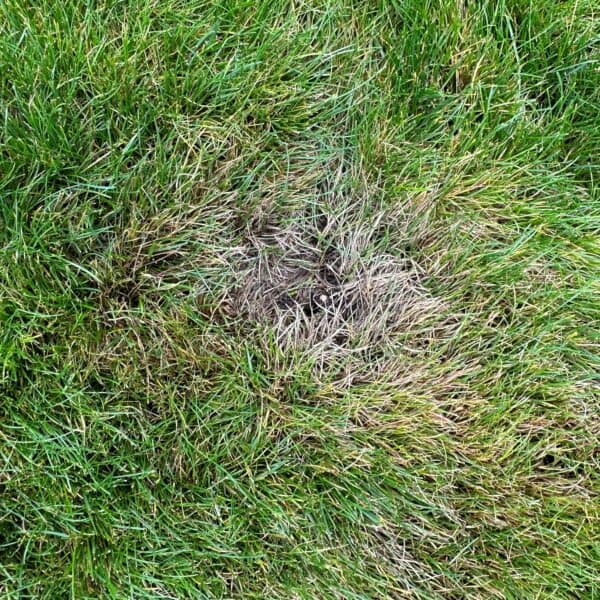
Leptosphaerulina Leaf Blight
Leptosphaerulina leaf blight, a fungal disease, can affect a wide range of turfgrass species predominantly cool season varieties, causing aesthetic damage and reducing overall turf health. This guide provides information on identifying, understanding, and managing Leptosphaerulina leaf blight in your lawn. The Cause and Susceptible Turf The culprit behind this disease is a fungus belonging to the genus Leptosphaerulina. Several species within this genus can cause leaf blight, but the most common ones associated with turfgrass include L. americana, L.…
Read More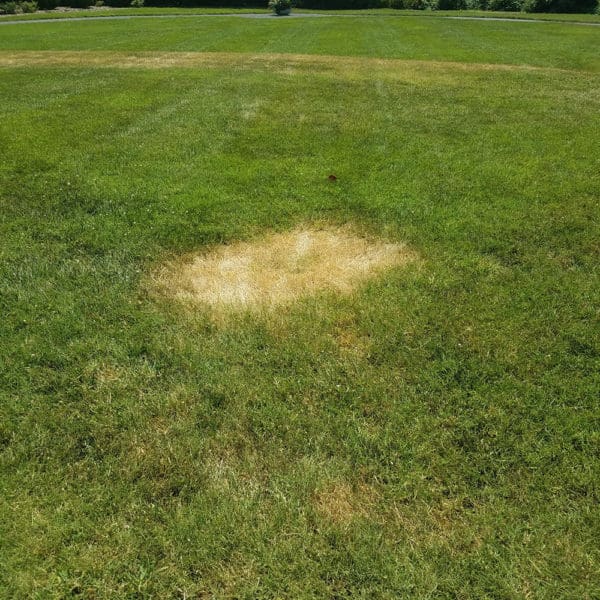
Take-all Patch
Initially small, light-brown dead patches appear on turf resembling Fusarium. Once Take-all Patch is established, the patches continue to grow throughout the year, causing turf to appear a bronze to red colour and fade out to brown. In cooler times of the year the patches can be grey. Patches may grow to 15 cm per year and can exceed 1 m. Often the patches are slow to recover and the middles are invaded by weeds and other grasses. Stolon and…
Read More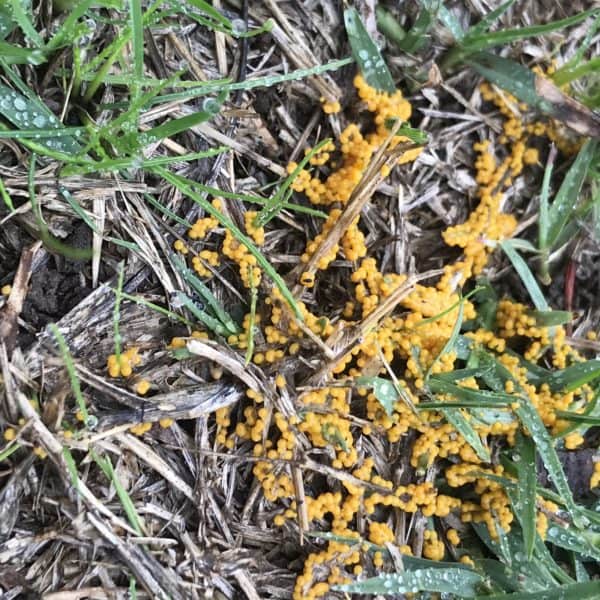
Slime Mould
Slime Mould affects all turfgrass species and can take on various appearances from a dusty spore to yellow spheres like caviar. It can smother grass blades, turning them grey, pink, purple, white or yellow. The affected turf forms patches up to 60 cm in diameter and it grows outwards, yet there is no immediate damage to the turfgrass. Slime Moulds are not plant parasitic. The fruiting moulds can become that thick on the leaf that the photosynthetic ability of individual…
Read More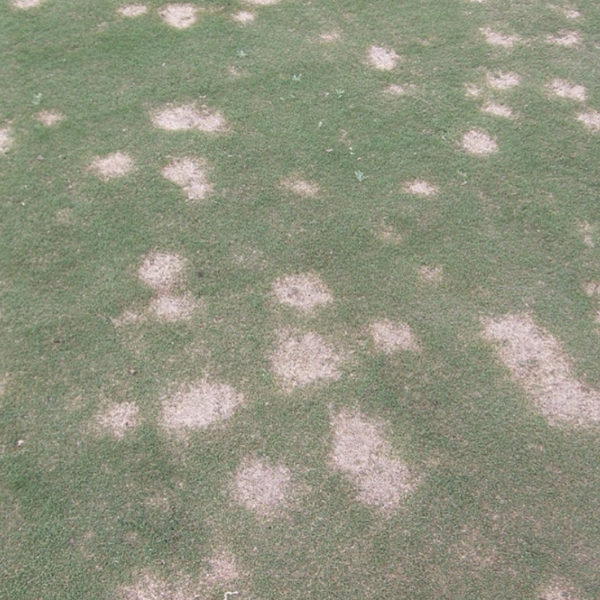
Spring Dead Spot
The first symptoms of Spring Dead Spot can appear in lower soil temperatures when growth is slow to dormant, depending on the season as early as late Autumn as we have seen recently. Traditionally it was found often in late winter and spring, when turf resumes its growth and will present circular, bleached dead patches. Patches are often also visible in autumn and in winter. The patches can range from a few centimetres to over one metre and can reappear…
Read More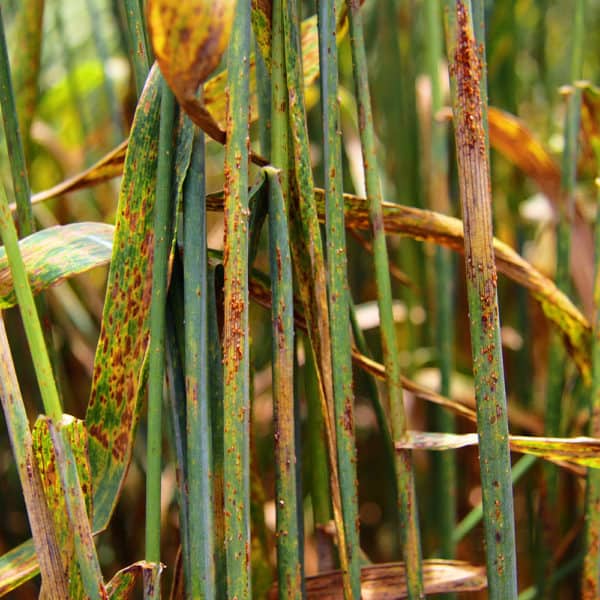
Rust
Rusts are fungal diseases that involve many different strains and affect a wide variety of plants, including grasses. Most warm and cool season turfgrass species are susceptible to Rust diseases, the turf health is irrelevant as it will also attack a healthy plant. Orange spores appear underneath the leaves, making Rust easy to identify. The spores, coloured orange to red, spread across affected grasses. These irregular patches will appear on the leaves and as the disease extends it will work…
Read More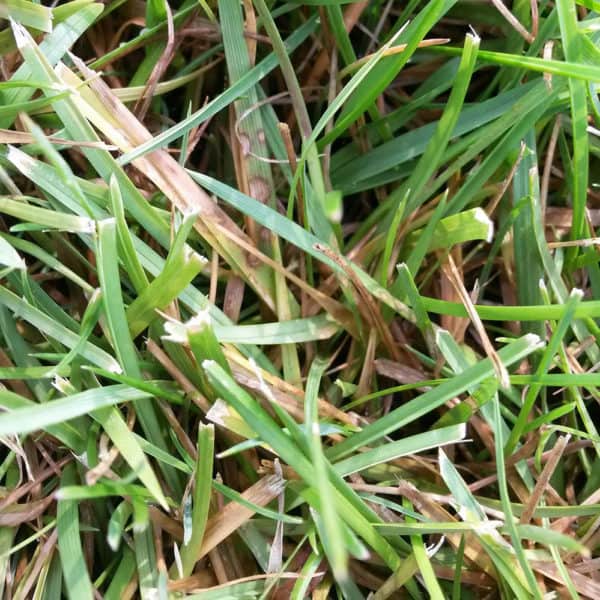
Pythium Blight
Pythium blight first appears as small, irregularly shaped spots ranging from 12 mm to 100 mm in diameter. Leaves appear water-soaked in appearance at first, then shrivelled. Diseased patches fade to a light-brown or grey colour. Groups of spots frequently join together. At times, the shape of the affected areas may resemble elongated streaks. Both the presence and pattern of these streaks seem to be determined by the flow or presence of surface water. With high humidity in early morning…
Read More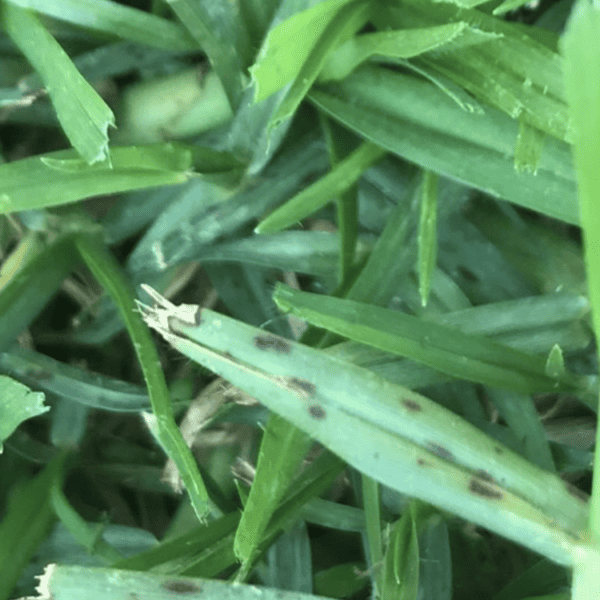
Black or White Helminthosporium (Black or White Helmo)
Message Lawn Addicts for further advice on other fungicides and lawn care products, available online. Black or White Helminthosporium (Helmo) is a common black or white leaf spot disease which is actually caused by Drechslera, Curvulari, Bipolaris and Exserohilum species of fungi. The disease cycle is generally short, as it requires extended periods of leaf wetness to develop and survive. ‘Helmo’ is caused by a common and serious group of diseases, attacking a diverse range of warm and cool season turf…
Read More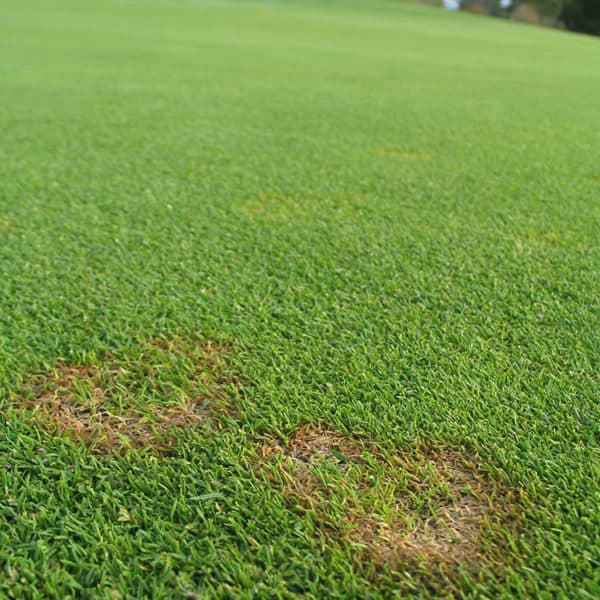
Fusarsium Patch
Fusarsium Patch is found in warm season and cool season grasses like wintergrass, bent grass, fescue, ryegrass, Kentucky Bluegrass and low mown Kikuyu in cooler climates. Initially round patches appear as small, water-soaked spots less than 5 cm in diameter. They then change in colour from orange-brown to dark brown and finally to a light grey. Some spots may enlarge, but are usually less than 20 cm in diameter. On low-cut turf a halo-like “smoke ring” could appear on the outer…
Read More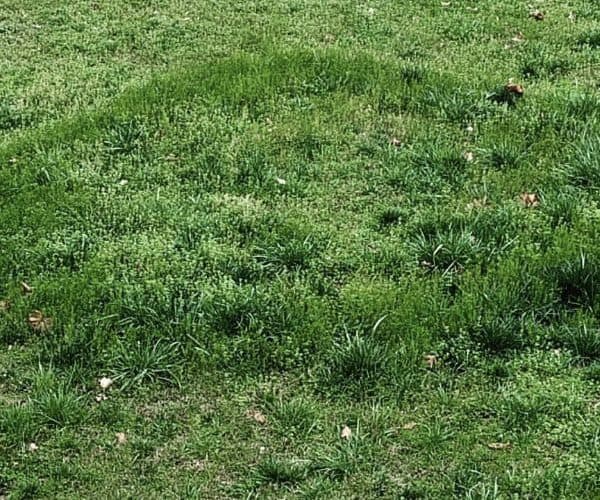
Fairy Ring
Fairy Ring occurs in all turfgrasses and symptoms vary with the fungal species involved. Circular or arc-shaped rings of darker or faster-growing turf appears in moist turf. A concentric ring of dead grass may develop inside the circle of lush grass. The size of the rings can vary from a few centimetres to indefinitely large, however activity in the turf stops when the individual rings come into contact with each other. It’s quite common for mushrooms or toadstools to be…
Read More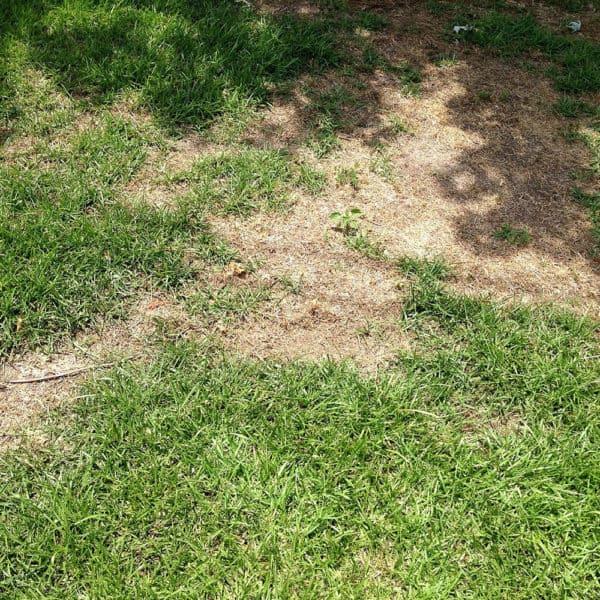
ERI or Ectotrophic Root Infecting Fungi
Also referred to as Couchgrass Decline, turf grass symptoms of ERI disease start by thinning out of the surface and can include straw-coloured patches that range in size from 30 cm to 1 metre in diameter. Ectotrophic root-infecting fungi (ERI fungi) are a factor in causing patchiness and poor root health in couch grass. The term ‘ectotrophic’ means these fungi grow over the root surface before they penetrate into the inside of the root. ERI fungi involves a number of fungal…
Read More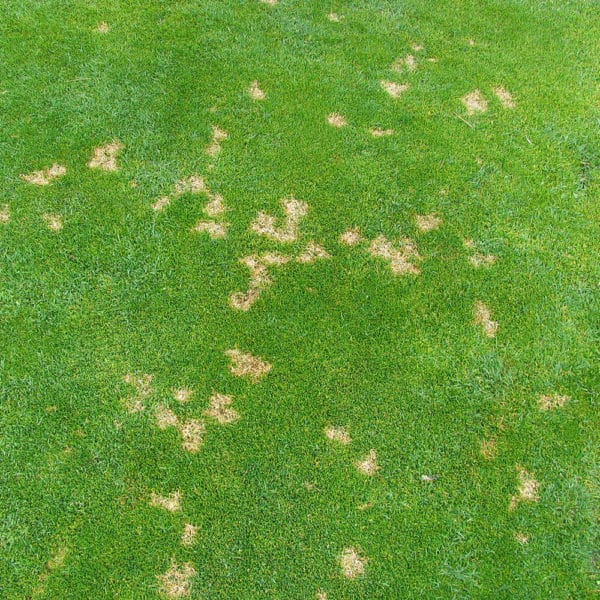
Dollar Spot
The first symptoms of Dollar Spot are small, circular and sunken patches in the lawn. Usually smaller than 6 to 7 cm in diameter, the patches are a pale and bleached colour, as a result of straw-coloured lesions that run down the blade. As the disease becomes more severe, the patches merge into larger irregular shapes. Dollar Spot appears on most cool and warm season grasses. Normally with dew, the mycelium may be seen as a cottony thread across the…
Read More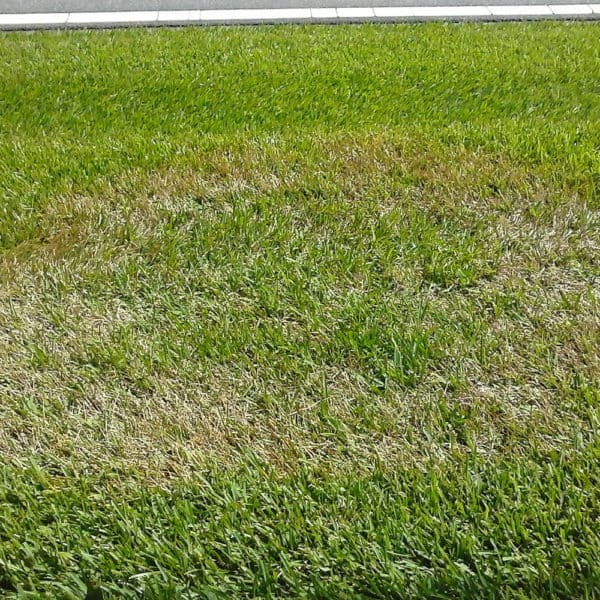
Brown Patch
Brown Patch appears as a round patch that can range in size from a few centimetres to a metre in diameter. The disease occurs on cool season and warm season turf grass species. At temperatures around 15 to 20°C, the spores germinate and begin to grow. When night temperatures are consistently above 20°C and moisture or humidity is high, the disease becomes most damaging. Initially, affected leaves become water-soaked and have a dark, purplish-green appearance as the disease sets in.…
Read More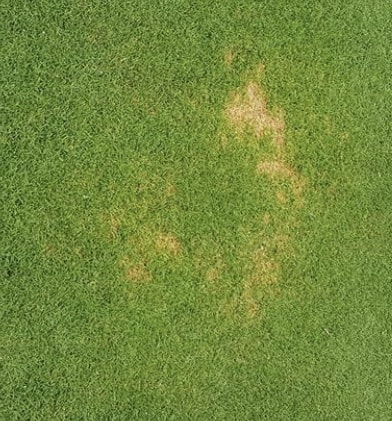
Anthracnose
Anthracnose is a selection of fungal diseases that either attacks the roots and/or the foliage. It is quite invasive in warm, humid environments. The diseases often follow a common symptom pattern. Basal rot is where the disease affects crown and root tissue, whereas the key disease affecting the leaves is foliar blight. Basal rot is often a symptom of anthracnose during cool wet periods. Foliar blight is more common during warmer temperatures and can be mistaken for drought stress. Normally,…
Read More
